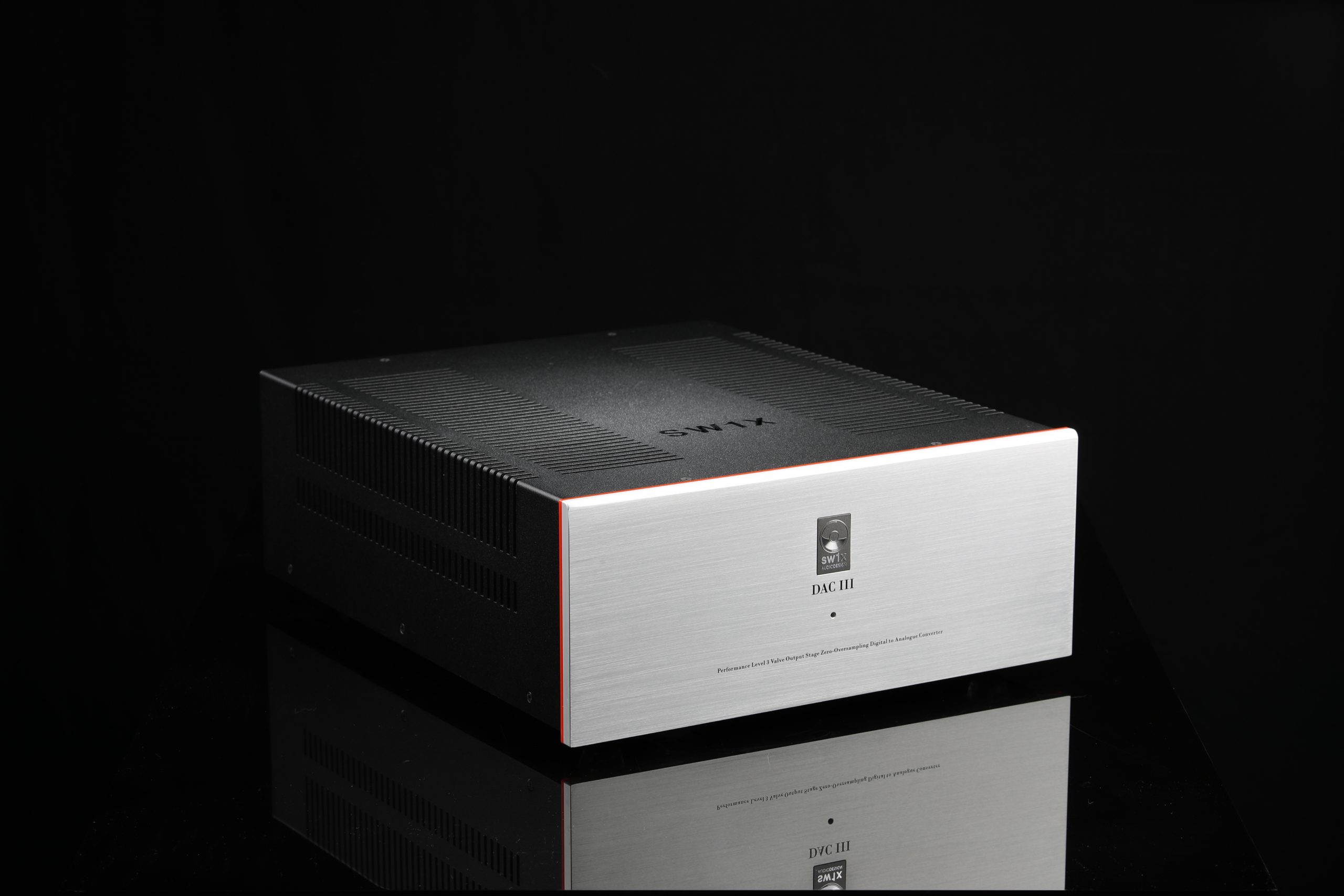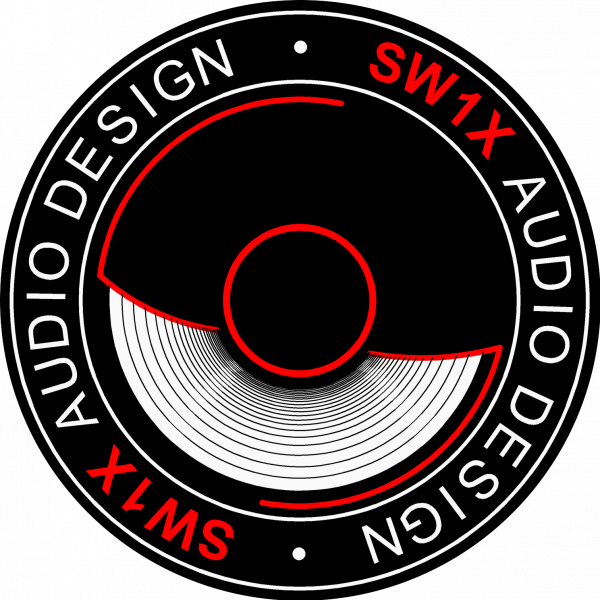
SW1X Audio Design, a company based in the UK, was unfamiliar to me before this review, something I suspect will be true of many a North American audiophile. But I hope that after reading this review, you’ll seek out their products, at least to hear, if not to own. To put it quite frankly, the SW1X DAC III reviewed here is a stupendous piece of gear, not because it exceeds other DACs I’ve had in my system, but because it invited me to listen so differently from all the rest.
I don’t use the word “invited” lightly, either. I’ve heard a lot of DACs, and generally feel that I have a mental catalogue of some of the best out there. The Chord DAVE and TT2, Holo Audio May, dCs Vivaldi, old Theta Gen V’s, and a handful of other very special DACs are the kinds of contenders that generally claw their way on to my shortlist. What these DACs do for me I usually think of as bringing the music more up to my expectations of resolution, dynamic punch, transient purity — in short, bringing the music to me.
What the SW1X DAC does is very different from those other DACs, and I suspect the reason lies in its heritage. SW1X Audio Design founder and chief engineer, Dr. Slawa Roschkow (see Interview article), has taken Audio Note UK as an inspiration but not an endpoint, and when I took a peek inside the unit, I was delighted to find not only an extremely well built product, but also an exceptionally well designed one. The circuits are unusual and unabashedly so. The influence from Audio Note UK is clear, both in the tube output stage and the choice of vintage TDA1541 chip. Keen readers with an appetite for classic ‘non-interpolating’ chips, such as the Phillips TDA chips, will recognize this as the rarer and more coveted version of the TDA1547, which is also a popular chip in several modern production DACs.
The output stage is a 5687 or 6N6P dual triode, and the power supply features a choke and tube rectification, and there is zero digital filtering of any kind. This firmly places the DAC III into the ‘all-tube, no oversampling, no filtering’ category. For digital purists who want the most modern digital brickwall filters and megahertz FPGA oversampling technologies, look elsewhere. For those who may find in digital a somewhat sterile, or occasionally less engaging characteristic when compared to vinyl, read on.
In many ways the story of the SW1X, or rather my small view into it, is also the story of my vinyl journey. As a relative youngster by the terms of the hi-fi industry — a wizened 25 — I grew up largely digital. A little over a year ago I began delving into the joys of vinyl, playing with cartridges, collecting records, swapping turntables and phono stages, and generally hearing any music made before 1989 in a totally new light. One thing that particularly strikes me with vinyl is the sense of bass.
A few friends of mine are well-respected vinyl cutting engineers and, in the process of pestering them with questions, I learned that one unique characteristic of vinyl is a rather large bump at 50Hz due to the nature of cutting lathe heads and RIAA curves. In addition to this, vinyl, even in the modern era, is generally made without a digital limiter, two factors that contribute to a couple of very desirable sonic characteristics.
First among these characteristics is bass, plain and simple. There’s a space in between ultra-tight heavily damped solid state bass and loose, somewhat thick bass on tube systems, often single-ended, with not enough feedback or damping. In between these lies the territory of what I like to think of as ‘invisible’, ‘organic’, or ‘natural’ sounding bass. Bass that simply takes on the texture and characteristic of the recording.
Second is liveliness, and while, yes, the curve of groove noise and analog recording and cutting gear can contribute to this, the fact that records are generally unlimited when cut means that even modern vinyl recordings have a dynamic punch and transient definition to them that almost all modern digital recordings lack, primarily because they are heavily limited to be as loud as possible.
Third is a kind of tonal density, a sort of ‘filled in’ and fleshed out sound, which benefits from both of the aforementioned characteristics but which also is something on its own entirely. I’m not sure exactly why this is or what causes it, but it is the opposite of bad digital, which often feels grey, lifeless and as if there are miniature pinholes in the soundstage — a lack of information expressed as absent spots within the sonic image. Vinyl possesses an uncanny depth because it fills in all this space in a particularly vivid way. Even the very best DACs struggle to do this well.
While the space of this review is too short to get into all the minutiae of how digital sampling works, this last concept is one I like to borrow language from image processing to understand. Aliasing and digital loss in images expresses itself as very small missing chunks of color, chromatic aberrations and other deformities in digital pictures, and in my mind is a useful analogue for digital in the sound realm, which often uses similar processing methods; oversampling, aliasing, etc. are common between the two.
Aliasing, one of the primary technological challenges in digital sampling conversion processes, is essentially the creation of harmonics that disrupt the signal, small distortions created by the act of processing musical waveforms in the digital realm and then changing them back into analog waveforms. DACs use various kinds of filters to attempt to deal with these aliasing issues, as well as truncation noise and other digital issues. I’ll spare you the gory and rather dry details of it here. All filters are essentially imperfect in their attempts to do this, but offer various benefits and disadvantages. Careful filter design is the most common method of optimizing the sound of a digital stage in a DAC.
The SW1X DAC III has no filtering stage. It is what is referred to as a ‘Non-Oversampling’ or NOS DAC. It sidesteps a great many problems associated with digital filters, but also trades off some advantages those filters have in phase and frequency accuracy. As mentioned before, however, the DAC III dispenses with solid state buffers, expensive custom-programmed FPGA chips and anything attempting to resemble a perfectly measuring, sub-noise floor distortion measurement device. In this case I consider that a good thing.
Why? Aside from the fact that I believe multiple decimal place THD numbers are often hiding too much damping from excessive feedback and attempting to pass off high harmonics as ‘clean’, the end result of any audio device in my mind is to reproduce the recording according to the tastes of the listener. I value neutrality of frequency in speakers because it presents me a window into the music. In componentry I often find a little editorializing can help sell me an illusion of how a recording sounds that I almost always find more believable than the illusion that ultra-low distortion perfect-measuring amplifiers give me. They’re both illusions ultimately, so why not pick the one you like sonically?
The SW1X does this, yet in a way that is not altogether as colored as one might expect given the retro chip and heavily tube-reliant analog stage. It does not color the output stage by making things slow, thick, woofy or any of those other adjectives I’ve heard assigned to amplifiers that we often think of as the opposite of fast and resolving.
In fact, the SW1X is lightning fast and ultra-resolving. More resolving than most of the DACs I have in my system, maybe even besting in resolution a $14,000 unit (I won’t name). It’s not the kind of antiseptic resolution that is all bunched together at the front of the soundstage though. The detail is orderly and arranged, composed evenly from front to back, left to right, top to bottom and even diagonally according to room dimensions on particularly transparent recordings. One can simply hear more of the spatial cues, the microdynamics, the plankton of the recordings with the SW1X than with most DACs I have ever used and currently own or have in for audition. And I have some top notch competition in house.
Two things aid this spatial orderliness. First is a sense that bass is more impactful, punchier, not bloated but just more dynamic, more epic, of a larger scale around 50Hz than with typical digital. Second is that there is a density to the sound, a kind of filling in of missing spaces, which much digital lacks. It’s as if someone has filled in the spaces that were missing with much digital, seeming to have this effect somehow even on limited digital recordings. The macrodynamic character is enhanced, the transients are given life and jump to life, tangible and tactile, almost real enough to touch — or at least they feel that way.
If these descriptions sound familiar it’s because they are. Yes, the SW1X sounds like vinyl to me. Or at least it has similar characteristics to vinyl. Certainly, no DAC will ever sound exactly like vinyl, and so the SW1X is at times maybe even more dense and thickly composed than vinyl, whereas the real analog deal is sometimes smoother, a little more characterful in the high end, a little less even in the mids in a very subtle way. This is apples to oranges though; a phonostage and cartridge can’t be exactly compared to a DAC and its output stage.
What can be compared is the feeling one has when listening to them. The SW1X has that captivating, dynamic, raucous, impossible to ignore quality that my vinyl playback system has. It leaps into the room, makes music somehow totally unfatiguing and yet demanding attention, saying ‘listen, must listen to me’, and generally makes a mess of other plans or obligations.
In comparison to my other DACs, the SW1X possesses perhaps a slight richness, a slightly subdued character in the treble, but I find this to suit nearly every digital recording I can find, and even extremely purist classical and bluegrass records stand to benefit from a little low end weight and the mild silkiness of the treble.
My speakers, the ProAc D30RS, certainly don’t lack for treble information, however, coming equipped with lightning fast ribbon tweeters. I’ve never heard them sound harsh or bright, but I can imagine with warm amps, a warm preamp, and with warm speakers it is conceivable that one could find the SW1X perhaps a little too subdued, though I would point to this as a problem of matching attendant gear rather than the fault of the DAC.
Other than this my only nitpick is a rather bare and standard functionality: no XLR outputs, S/PDIF input only, and the like. However, take a gander at the SW1X website and you’ll quickly see that this is not a cookie-cutter product. SW1X DACs may be outfitted with a veritable buffet of options, and I’m certain that any specific tastes, gear matching concerns or other special requests are likely to be satiated. This is a company in pursuit of absolute musical perfection and, for those with the budget, flights of fancy can be met. Aside from this, the chassis is quite large and rather plain, but I find this inconsequential when compared with the sound on offer.
So that’s it, my only minor notes, not even complaints, really just conditional notes. The SW1X DAC III is quite simply one of the best DACs I have ever heard, perhaps even the best. If musical engagement factor with digital playback is the metric, then it is far and away the best DAC I have auditioned in my system. Music poured effortlessly out of my system, and combined with a pair of ampsandsound Zion monoblocks and a homebrew OTL preamp, I’d never heard my system do . . . well, everything. Bass is massive, the midrange is open, meticulously, forensically detailed yet also rich and dense, and treble notes seem to hang for hours in my living room. I am very seriously considering reaching out and asking after an SW1X DAC for myself when funds permit. I have been a digital hi-fi enthusiast my entire life, heard the cream of vintage and modern DACs of all stripes, and I can confidently say the SW1X is the first one I can imagine ending my digital journey with. It offers nothing less than total musical satisfaction, at least for this listener.



